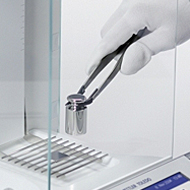 |
(Mettler-Toledo Inc.: Greifensee, Switzerland) -- Balances are tested and calibrated with weights. Only calibrated weights are traceable to the International Prototype Kilogram, calibrated at the Bureau International des Poids et Measures (BIPM) in Paris, and ensure accurate weighing results. Therefore, balances should always be tested with reliable and trusted calibrated weights.
|
Weight calibration is an intensive and accurate process that is likely to become more important as industries continue to optimize their weighing-equipment tests to improve processes, reduce quality issues, and ultimately, save money.
Calibrating a weight means determining its exact mass, which is done using comparisons between reference and test weights.
…
Add new comment